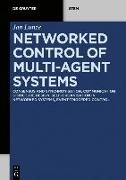- Start
- Networked Control of Multi-Agent Systems
Networked Control of Multi-Agent Systems
Angebote / Angebote:
During the last decade, networked control systems have developed as a new area of control theory, which studies a set of physical components and control systems that are connected by a digital communication network. Potential application areas are multi-vehicle systems (e.g. platoons on highways) or power grids. There are two new challenges of this theory. First, the data network provides flexible communication means in which every component in a control loop may send information to any other component. The methodological problem is to elaborate systematic ways for the selection of information structures that are suitable for a given control task. Second, as many networks used for control purposes act simultaneously as communication medium for other tasks, time delays in the delivery of the information or packet loss regularly occur and the control systems have to be made tolerant against such imperfections. This is the first textbook about networked control that gives a thorough introduction to the graph-theoretical and systems-theoretical foundations and combines both to get systematic ways for analysing networked control systems and for choosing the communication structure of the controller. It starts with consensus and synchronisation as the classical problems of the field and continues with the communication structure design, self-organisation and event-based control, which are novel problems for which solutions have been elaborated recently. The common methodological foundation for the solution of these problems is network thinking, which means that the overall system is seen as a compound of coupled subsystems which gets its dynamics from the subsystem properties and from the interconnection structure. The main problem is to bring graph theory and system theory together to investigate which collective behaviour results from the interactions of subsystems with specific properties. The book concentrates on multi-agent systems, which are physical subsystems that do not have any physical couplings, but have to satisfy common control goals. Cooperative controllers have to be found that introduce couplings among the controlled agents. This situation leads to the general problem of the book to find methods for the selection of the information structure of networked control. The main difference between the scope of this textbook and the contents of several monographs on networked control systems lies in the emphasis on the communication structure design. The competing books, which are characterised below, concentrate on the classical problem of making networked controllers tolerant to imperfections of the communication (packet loss, transmission delay, bandwidth limitations etc.).
Noch nicht erschienen, Juli 2019




